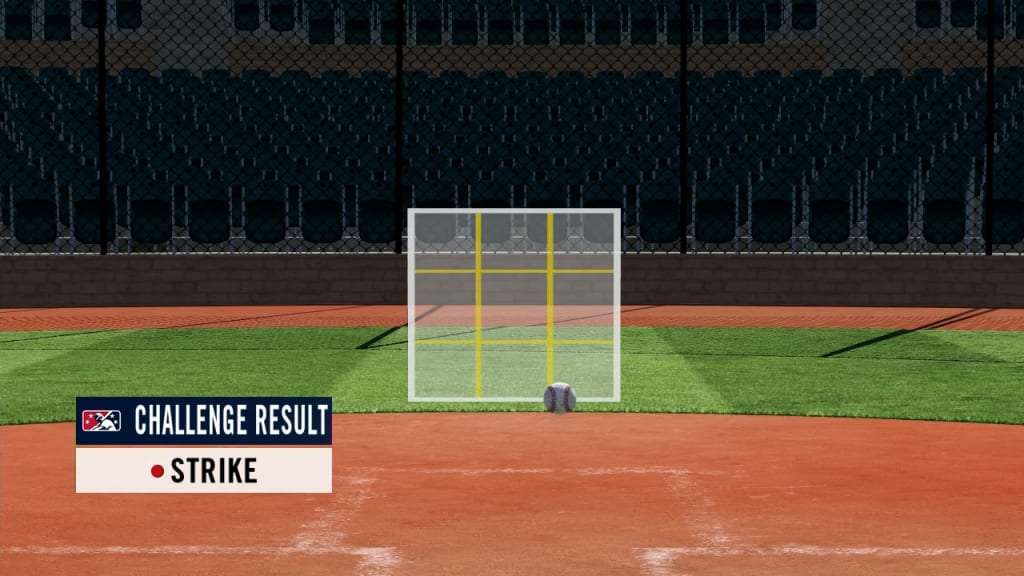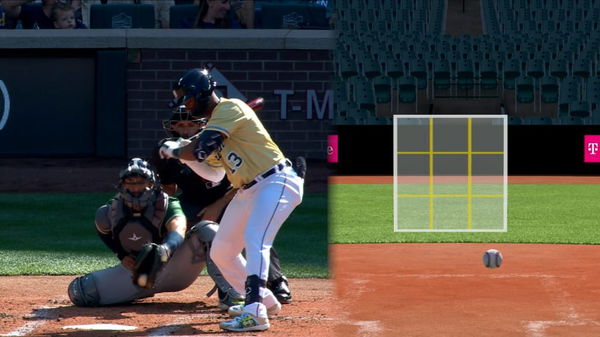
Imago
Image Credits: MLB.com

Imago
Image Credits: MLB.com
In an era where technology is revolutionizing every major sport, from VAR in soccer to Hawk-Eye in tennis, baseball has remained one of the last strongholds of human judgment. MLB, steeped in tradition and an enduring cultural aura, has long relied on the instincts and calls of its umpires. But tradition shouldn’t come at the cost of fairness or accuracy. And in this season, a string of controversial calls and high-profile ejections has amplified the demand for greater objectivity in officiating. And now, finally, a change is here.
Watch What’s Trending Now!
On Tuesday, MLB’s Joint Competition Committee voted to approve the implementation of the Automated Ball Strike Challenge System—better known as the “robot empire”—for the 2026 season. After 150 years of fans, players, and managers ranting about the inconsistent strike zones, teams will finally have the chance to overturn the calls, all with the help of technology. So, What is an Automated Ball Strike Challenge System? Below are the details of one of the most significant rule changes the sport has seen in decades.
ADVERTISEMENT
What is an Automated Ball Strike Challenge System? Know it’s working, uses, and more
Automated Ball Strike Challenge System is a robotic strike zone technology developed to assist or replace human umpires in calling balls and strikes in baseball. It utilizes a combination of radar and camera systems, such as Hawk-Eye technology, to track the exact location of a pitch as it crosses the plate. Here, the main goal is to increase accuracy and consistency in the strike zone.

Imago
Image Credits: MLB.com
For the unversed, this technology has primarily been tested in Minor League Baseball over the past few seasons. At the Triple-A level, games have alternated between full ABS usage and the challenge system. This is to assess how each format affects gameplay. While the system has not yet been adopted in MLB regular-season games, it remains under serious consideration, especially as the league seeks to improve fairness and reduce errors in officiating. The last spring training season also saw the use of ABS in the field.
ADVERTISEMENT
What are the rules and regulations associated with it? Know the Automated Ball Strike Challenge System as it comes into MLB
Well, the Automated Ball Strike Challenge System works by analyzing the pitch’s trajectory in real time. It defines a personalized strike zone for each batter based on their height and stance. So, when a pitch is thrown, the system instantly determines whether it falls within the strike zone. In one version of the system, this call is relayed to the home plate umpire, and the umpire announces the call.
ADVERTISEMENT
But this is only part of it. In the challenge section, the team can question an umpire’s call. If a pitcher, catcher, or batter disagrees with the ruling, then they can signal a challenge by simply tapping their hat or helmet or even saying it out loud. And from there, the ABS kicks in. And well, in here tech comes in big time too. The ABS Challenge System runs on a private 5G network provided by T-Mobile for Business Advanced Network Solutions, supported by twelve Hawk-Eye cameras that would be around the field. These cameras are high-tech, and they can track the pitch’s location against the batter’s strike zone perfectly. In case even the smallest part of the ball clips the zone, then it’s ruled a strike.
Top Stories
Blue Jays in Real Trouble as Two AL Rivals Go All-In on $116M Trade Target Amid Bo Bichette Uncertainty

David Stearns’ Mets Job Hangs by a Thread as New York Calls End to “Love Affair,” Claims Insider

Alex Rodriguez Feels Anthony Volpe’s Struggles Are Result of Yankees’ “Broken” Hitting Philosophy

Kyle Tucker’s Controversial Call Draws Scrutiny as Grim Free Agency Update Emerges, Per Top Insider

Mets World Series Champion Turns On David Stearns After Team Snubs Pete Alonso in Major Offseason Misstep

The home plate umpire announces the challenge result to the fans while a graphic shows the outcome on the scoreboard and broadcast. The best part is that the entire process takes just 15 seconds, which is insane. Under the ABS challenge system, each team begins the game with two challenges. But here is the catch—if a challenge is successful, then the team keeps it. In theory, that means there is no true limit on the number of challenges a team can use.
ADVERTISEMENT
Who approved its implementation in the MLB? Are Teams and players in favour of the robot umpires? Know the answer
Well, so MLB is officially bringing in an automated strike zone challenge system starting with the 2026 season. The league’s Joint Competition Committee voted on it on Tuesday, and the measure passed 9-2. For the unversed, that group is made up of six owners, four players, and one umpire. And not surprisingly, all the owners backed it, the umpire opposed it, and the players, who had raised concerns about ABS earlier this year, actually shifted their stance, with three of the four voting in favor.
But not all the players. For example, Max Scherzer. “Can we just play baseball?” Scherzer asked at the start of the season. “We’re humans. Can we just be judged by humans? Do we really need to disrupt the game? I think humans are defined by humans.”
However, the swing in player support came from team votes: 23 of the 30 clubs said yes, so the players on the committee cast their ballots to match that majority. The result? After decades of arguments, ejections, and animated debates over balls and strikes, those shouting matches with umpires will soon be a thing of the past. Time will answer if that’s for good or worse.
ADVERTISEMENT
ADVERTISEMENT
ADVERTISEMENT
ADVERTISEMENT

